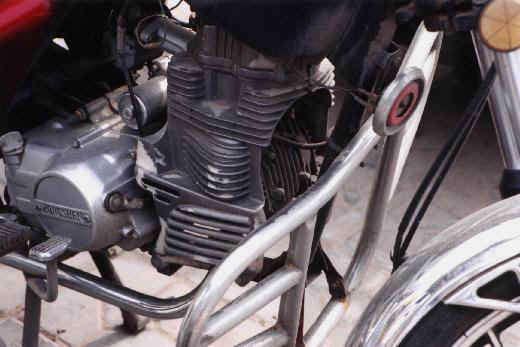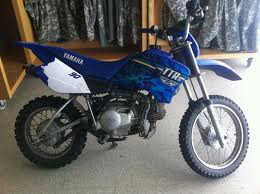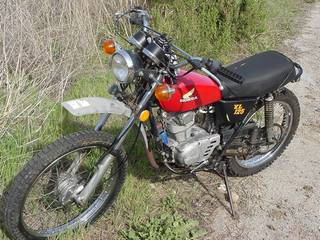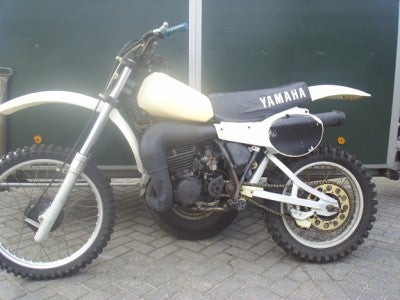Sometimes the desire to hit the dirt trails burns bright, but your wallet feels a bit light. Does this mean your dirt biking dreams are dashed? Absolutely not! Finding a Dirt Bike Cheap is entirely possible. It just requires a bit of savvy, patience, and knowing where to look.
Maybe you’re saving up from a part-time job or just looking for an affordable way to get into the sport. Whatever your situation, a limited budget shouldn’t keep you off the track. We’re talking about scoring a decent, rideable dirt bike without breaking the bank – think a few hundred dollars, maximum. Sound unbelievable? We’re here to show you it’s not only possible, but achievable.
Forget browsing those glossy magazines filled with the latest models and premium prices. Bargains aren’t hiding there. So, where are the hidden gems of the cheap dirt bike world?
For years, seasoned riders and bargain hunters have known the secret: online classifieds and local listings. Websites like Craigslist are goldmines for uncovering incredible deals, if you know what to search for. Don’t overlook local newspapers either, especially those with free or low-cost classified sections. People selling cheap dirt bikes often opt for free or inexpensive advertising. Craigslist is free, and it’s tough to beat that price for sellers.
Our “Project Lowbucks” aimed to prove this point. The result? A 1994 Suzuki RM250 motocross bike. Where did we find it? Craigslist, of course. The price that jumped out? A mere $100! Naturally, skepticism crept in. A hundred dollars for a dirt bike? It had to be complete junk, right? Intrigued, we decided to investigate.
The bike was indeed missing a gas tank and a piston. It was coated in a thick layer of dust, leaves, and spiderwebs, clearly indicating it had been sitting outdoors for a considerable time.
The seller was a young man relocating from Idaho to Arizona, and his father was insistent on clearing out the “junk.” But beneath the grime and debris, we saw potential. The frame was straight and free of cracks, the wheels appeared true, and all the spokes were intact. The plastic body panels, including side panels, shrouds, and number plates, were all present, though their original color was obscured by layers of filth. The seat was in a similar state.
Adding to the surprise, the dirt bike came with a clean title and even a decent stand. Without hesitation, $100 was exchanged faster than you could kickstart an engine. Years of experience buying and selling bikes told us that the title and frame alone were worth several times the asking price. The bike was loaded up and brought to its new home.
Once in the workshop, the real work began – cleaning. Hours of elbow grease later, the transformation was remarkable. The plastic gleamed, the seat looked almost new, the wheels shone, and the chassis and engine were free of grease and dirt. It was then that the true value of the deal became even clearer. The wheels were gold-anodized Excel Takasagos, front and rear, and looked brand new under the grime. Suddenly, the wheels alone were worth around $300, and the plastic easily another $100. The engine’s internal condition was still unknown, but even as parts, there was at least $100 worth of value there. The forks seemed in good order (potentially another $100 value), and the shock wasn’t leaking or rusted.
This was the ideal scenario. If the engine was salvageable, rebuilding it affordably was a real possibility. Even if the engine, transmission, or electrics were beyond repair, parting out the bike on eBay or Craigslist would still yield a profit.
Next came the crucial mechanical assessment. With the bike on the stand, the transmission was tested. Neutral was found, then shifting down to first gear – success! Then back to neutral and up through the gears. Second, third, fourth, fifth – all engaged smoothly. This process was repeated several times to confirm and listen for any unusual noises. While a simple test, a functioning transmission is a major hurdle cleared when buying a cheap dirt bike.
Spinning the wheels revealed no play in the bearings, front or rear, and no grinding sounds. The front brake lever was squeezed, and the brake engaged firmly. The rear brake pedal, however, went straight to the stop without any braking action. A quick check revealed an empty brake fluid reservoir. After refilling and bleeding the system, the rear brake was back in action.
Attention then turned to the engine. The cylinder was in place, but not bolted down. Removing the cylinder revealed no scoring or damage to the cylinder liner or head. However, closer inspection showed marks on the power valve mechanism, indicating past contact with a piston – explaining the missing piston. The previous owner had likely disassembled the top end, discovered the damaged piston, and abandoned the project.
The connecting rod felt solid with no excessive play, and the crankshaft rotated smoothly without any grinding or knocking. So far, so good.
Hopes were high for getting spark. A fresh spark plug and some wire connections later, a strong blue spark confirmed electrical function. Project Lowbucks was showing real promise for becoming a decent, running dirt bike on a shoestring budget.
Essential Advice for Finding Your Cheap Dirt Bike:
-
Stick to Reputable Brands: Focus your search on established Japanese brands like Honda, Yamaha, Suzuki, and Kawasaki. These brands offer reliability and readily available parts, crucial for budget rebuilds.
-
Avoid Chinese Knock-offs: Steer clear of off-brand, Chinese-made bikes. While tempting due to their low price, their quality is often subpar, and sourcing parts can be a nightmare. They are generally not worth the hassle when looking for a dirt bike cheap.
-
Exercise Caution with European Bikes: While brands like Maico and KTM are desirable, finding affordable parts and rebuildable models can be challenging. Parts tend to be expensive, and owners often know the value of these bikes, making cheap deals rare.
-
eBay and Online Parts Marketplaces are Your Friends: For older Yamaha or Suzuki dirt bikes (even 20 years old), eBay and online marketplaces can be treasure troves for reasonably priced parts. Patience is key to finding good deals. Part two of this series will detail the parts sourced for the Suzuki and their costs.
-
Bring a Bike Stand for Inspection: When checking out a potential purchase, bring a bike stand. Perform the transmission test described earlier. While you’re at it, examine the wheels, forks, shocks, chain, and sprockets. These components add up quickly if they need replacing, impacting your cheap dirt bike budget.
-
Always Check for Spark: Verifying spark is crucial. No spark can indicate significant electrical issues, adding to your repair costs.
-
Title Considerations: A title is highly recommended. Without one, registering the bike can be problematic. However, a bill of sale, seller’s driver’s license copy, address, and phone number might suffice depending on your state’s regulations. Research your local DMV requirements before committing to a purchase without a title.
-
Cash is King (and Leverage): Bring cash and don’t be afraid to negotiate. If the seller is asking $150, offering $125 cash might just seal the deal. Many sellers are motivated by cash and quick sales, especially for cheap dirt bikes.
-
Two-Strokes are Budget-Friendly: For a cheap dirt bike project, lean towards two-stroke engines. They are simpler to work on, less expensive to maintain, and parts are widely available. Avoid four-strokes, especially older ones, as valve and cam issues can lead to costly repairs.
-
Age Sweet Spot: 80s and 90s Bikes: Unless you find a truly exceptional older model in great shape, focus on bikes from the 1980s and 1990s. These eras offer a good balance of affordability, parts availability, and reasonable technology.
-
Paddle Tires are a Red Flag: If a bike has a paddle tire, be wary. Paddle tires are used in sand, and sand riding can be hard on bikes. High wear and tear is a potential concern.
-
Avoid Bikes with Missing Critical Parts: Pass on bikes missing essential components like carburetors, shocks, or airboxes. Sourcing these missing parts can be difficult and costly, defeating the purpose of a cheap dirt bike project.
-
Outdoor Storage Warning Signs: Bikes stored outdoors often suffer from sun and weather damage. Seat covers degrade, foam deteriorates, and plastic becomes brittle, especially in harsh climates. While faded plastic can be overlooked, brittle plastic is a problem. Bikes stored indoors are preferable.
-
Focus on Potential, Not Cosmetics: Don’t get hung up on cosmetic flaws like dust or faded paint. Assess the bike’s overall mechanical condition and potential. Elbow grease can go a long way in reviving a cheap dirt bike.
-
Motocrossers: Best Bang for Your Buck: 125cc or 250cc motocross bikes are often the most affordable and readily available cheap dirt bikes. Street-legal or dual-sport bikes tend to command higher prices, even in used condition.
-
Minibikes Offer Entry-Level Fun: If you’re looking for a smaller bike, the minibike market is vast. Many riders outgrow these bikes, leading to more affordable options.
Now that you have the essential knowledge, let’s look at some real-world examples of cheap dirt bikes found online. The following Craigslist listings illustrate the types of deals (and potential pitfalls) you might encounter. Note: Craigslist photos are often less than stellar, so please excuse the image quality.

200cc Dirt Bike – $175
“2004 200cc Chinese dirt bike. Kick start works every 3rd go-around but carb is clean and bike will run. Good extra set of tires too. No title. $175.”
Avoid this one. Chinese bikes are notorious for poor quality, and a non-running bike with unknown issues is a gamble, even at this price point. The lack of a title further complicates things. This is not the path to a reliable dirt bike cheap.

2000 Yamaha TTR 90 – $200
“Must go-200 OBO. I’m moving and the bike is just sitting. Carburetor needs some adjustments and the bike is not running because of that. Works great otherwise. If you know motorcycles then this is a great opportunity. Serious inquiries only. Thank you.”
This could be worth considering, especially for a smaller rider or beginner looking for a dirt bike cheap. Yamaha TTRs are generally reliable. Verify compression, spark, and gear engagement. The seller’s willingness to negotiate (“OBO”) and the presence of a title are positive signs. A carburetor adjustment might be a simple fix.
1974 Honda XL 125 – $150
“1974 Honda XL 125 Dirt/Street motorcycle. Bike doesn’t run. Needs top end work. Would be a great project bike or parts bike too. Bike is mostly complete. $150 OBO, Make a reasonable offer and ill accept it.”

Steer clear of this one. A 1974 four-stroke requiring “top end work” is a recipe for expensive and time-consuming repairs. Parts for a bike this old can be challenging to find and costly. While cheap upfront, it’s unlikely to be a dirt bike cheap to get running.
Kawasaki KX 125 Parts Bike – $75
“1986 KX 125 parts bike I have the engine but the crankshaft is bad. $75.00”
Run away from this “deal.” A bad crankshaft means major engine work. Crankshaft, rod, bearings, and gaskets can easily exceed $500 in parts alone. Unless you’re specifically looking for parts to sell, this “parts bike” is more of a money pit. Definitely not a path to a dirt bike cheap for riding.
.jpg)
Kawasaki KE 175 Project Bike – $80
“1980 KE 175 this bike is stock and complete But it needs a new flywheel for the magneto $80.00”
This could be a worthwhile gamble if the seller has a title. A magneto flywheel issue might be a relatively simple fix. Kawasaki KE175s are decent vintage bikes. If the magneto is the only problem, and you can negotiate the price down slightly, this could become a dirt bike cheap and fun project. If it turns out to be more serious, parting it out could recoup your initial investment.

YZ250 – $600
“1982 yz250 needs front fender and throttle assembly two stroke”
While $600 is pushing the definition of “dirt bike cheap” compared to the other examples, a 1982 YZ250 in good condition is a desirable vintage bike. 1982 was a great year for the YZ250, known for its six-speed gearbox, strong engine, and good suspension. Inspect it carefully for compression and spark. If mechanically sound, and the missing fender and throttle assembly are easily sourced, this could be a solid vintage racer or trail bike project.
87 CR125 project bike – $100
“ok this is my last post after this the bike goes to the scrap yard, i have a 87 cr125 its missing the head, exhaust, handlebars, and radiator hoses, the plastics are not broke but do need painted, i found a head on eBay for 50$, i don’t have a title bike was left here by previous people in our house 12 yrs ago, 100 is the lease i will take so please don’t ask any lower”
Avoid this “scrap yard” candidate. Missing so many critical parts (head, exhaust, handlebars, radiator hoses) and no title make this a money pit, not a dirt bike cheap project. The cost of missing parts will far outweigh any potential value.
1979 Yamaha DT 125 – $10
“$10? This sounds too good to be true!” “I called the owner and found out that the bike had been sitting in the back of a shed for years. It was complete, but he had no knowledge of this bike, or bikes in general. The title was already signed from 12 years ago and was in his son’s name. He said it was running when it was put in the shed, and hadn’t been touched since then. This sounds like the kind of bike to consider, especially if it looks decent.”
Finding a dirt bike cheap requires diligence, knowledge, and a bit of luck. But as “Project Lowbucks” and these Craigslist examples show, incredible deals are out there. With careful searching and smart buying practices, you can get your boots dirty without emptying your wallet. Happy riding!
We are committed to finding, researching, and recommending the best products. We earn commissions from purchases you make using the retail links in our product reviews. Learn more about how this works.

